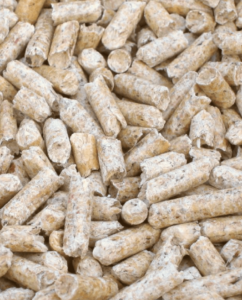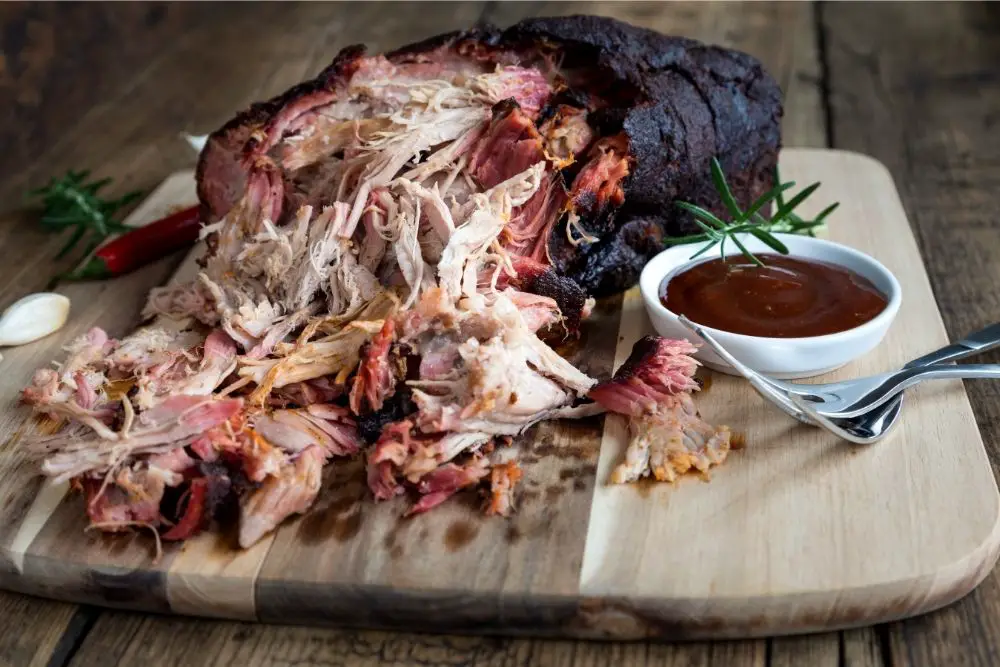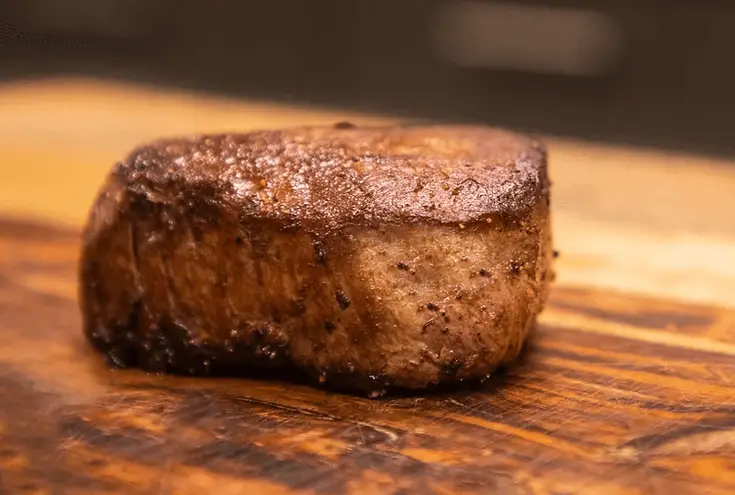When it comes to firing up your smoker grills, two of the most abundant sources of fuel out there are wood chips vs wood pellets.
It can be tough to know the functional difference between these two types of fuel. After all, both are comprised of natural hardwoods and are meant to cook and provide delicious smoky flavor to your food.
Turns out, there’s quite a bit of difference between wood pellets and wood chips for smoking and grilling. In this article, we’ll cover everything you need to know about wood chips vs wood pellets. By the end, you’ll know how they’re made, how they’re best used, and what you can expect when you cook with each.
Wood Pellets – Overview
Wood pellets are capsule sized pellets that are essentially compressed pellets of hardwood sawdust. They have an interesting place in the history of outdoor cooking. Originally, wood pellets were designed to fuel a new type of grill that was invented in the 1980s – the pellet grill.
Pellet grills cook food by feeding these wood pellets from a hopper, down through an auger, and then into a firepot which ignites the pellets. The heat and smoke from the ignited wood pellets are then distributed around the cooking chamber by a fan.
Over the last few decades, pellet grills have exploded in popularity and therefore wood pellets have become more widely available. And as it turns out, wood pellets have practical applications outside of just fueling pellet grills. They are also great for cold smoking, converting gas grills into smokers, and adding wood fired flavor to charcoal grills, but more on that in a moment.
How are Wood Pellets for Smoking and Grilling Made?
Wood pellets are made from compressed sawdust 100% hardwood trees. Oftentimes, wood pellets are made from repurposed and recycled wood. For example, many lumber mills or furniture shops might have scrap wood that has no use to them. This wood is collected by a pellet manufacturer, ground to sawdust, and then compressed into wood pellets that can then be used for cooking.
The compression process involves exposing the sawdust to extremely high heat and pressure, which leaves the wood in a tiny capsule sized pellet.
Characteristics of Wood Pellets and When to Use Them

By nature, wood pellets are pretty dense. They burn very hot, produce minimal ash, and burn slowly, especially compared to wood chips.
Because of all of that, using wood pellets means that you can very easily control and predict your temperature and your smoke levels while they burn. A lot of this process is controlled automatically if you’re using a pellet grill, but if you’re using wood pellets in another context it’s nice to be able to accurately predict how your food will be affected.
Since wood pellets are slow burners with moderate to high smoke levels, they’re an ideal choice for cold smoking and converting gas grills to smokers. Both of these uses for wood pellets are made possible with a pellet tube smoker. Essentially, you load a tube with wood pellets, ignite one end, and the tube will facilitate a slow, smokey burn for 3 to 5 hours.
Wood pellets combined with a pellet tube are ideal for cold smoking because you can easily move and place the tube away from your main cooking chamber to help keep the temperature down. Conversely, you can place the tube closer to your food if you are smoking BBQ on your gas grill – it’s a perfect way to add a smokey flavor to your cook without having to buy a smoker.
Wood Chips – Overview
Wood chips on the other hand are subjected to much less processing. They are pieces of hardwood that are not uniform in shape and often have jagged edges. On average, wood chips are usually about 1 to 2 inches in diameter.
How are Wood Chips Made?
Wood chips come from pieces of wood that have been dried out to particular moisture levels which are ideal for cooking food. From there, they are run through a wood chipper and are cut up into little pieces of wood. After they are cut down to size, the wood chips are then packaged, distributed, and sold.
Characteristics of Wood Chips and When to Use Them

Wood chips burn fast, especially compared to wood pellets, and are ideal for short bursts of smoke or to be kept at a smolder if you want extended periods of smoke to come off of them. They do not burn particularly hot and won’t have much of an effect on cooking temperature if any at all.
Wood chips also impart a bolder, more bitter tasting smoke than wood pellets do. That’s not necessarily a bad thing, but it’s definitely something to keep in mind – especially if you’re using a strong wood flavor like mesquite.
You can use wood chips for extra flavoring in a charcoal grill or also as a source of flavor in many different types of smokers. In an electric smoker, for example, an inbuilt temperature control heating element is designed to smolder wood chips at the perfect temperature to impart the ideal amount of smoke on your food while it cooks. Wood chips can also be combined with charcoal fires in a smoker to impart extra flavor on your food.
Wood Chips: To Soak or Not To Soak
One of the most common arguments I read on grilling and smoking forums has to do with whether or not you need to soak wood chips before using them. In my personal opinion, it’s completely unnecessary to soak – you should only do it if you want to.
The argument goes that soaking your wood chips will lead to more steam and therefore moisture releasing out of the wood and into your food. I’ve also heard it said that soaked wood chips burn slower and that’s why you should soak them.
While both of those arguments are technically true, in practice they don’t make very much of a difference. Not only that, if your food turns out dry and not moist I can guarantee that not soaking your wood chips isn’t even close to the primary reason why. You can easily add moisture to your food by spritzing it with water or apple cider, a very common practice when smoking BBQ.
Wood chips are already dried out to ideal moisture levels during the manufacturing process. Not only that, it takes 24 hours or more of soaking for a significant amount of moisture to penetrate the wood – unlike the typical 1 hour soaking time I see recommended often on the internet. The bottom line, wood chips are ready to go as is when you buy them!
Pros and Cons
Wood Pellet Pros
- Wood pellets burn slow and hot, making them ideal for cold smoking, converting a gas grill into a smoker, or adding light wood flavor to a charcoal grill.
- It’s almost impossible to “over-do it” with wood pellets – rarely if ever will your food results be bitter.
- On a per pound basis, wood pellets are extremely cheap. Combined with the fact that they’re slow burners, this means that your dollar goes a long way when using wood pellets as your fuel of choice.
- If you own a pellet grill, wood pellets are the way to fuel your grill to make delicious foods (check out our how to guide for the best pellet grill steaks here)
- Wood pellets produce minimal ash, and therefore require minimal cleanup. For reference, a 40 pound bag of wood pellets will only produce about 1/2 cup of ash.
- You are using repurposed wood, which is a small positive contribution to our ecosystem.
- Wood pellets are widely available in many different flavors.
Wood Pellet Cons
- Compared to wood chips, chunks, logs, and lump charcoal, wood pellets produce a moderate amount of smoke and flavor. That’s not a bad thing in all situations, but might be if you’re trying to impart lots of flavor for BBQ.
- Since they were designed for use in pellet grills and smokers, they are a little tougher to get results out of when used inside of other grills and smokers.
Wood Chips Pros
- Provide strong bursts of smokey flavor that can be ideal for shorter grilling sessions.
- When used in moderation, they can be a great flavor value add for charcoal smokers.
- Many electric smokers and propane smokers are designed specifically for use with wood chips. Each of these style of smokers have a heating element that burns wood chips at an ideal temperature.
- Can easily be combined with charcoal briquettes to add extra flavor.
- Wood chips are widely available in many different flavors.
Wood Chips Cons
- It’s very possible to “over-do it” with wood chip smoke. If you don’t moderate, your food could turn out bitter – especially with stronger flavors like mesquite.
- You can’t use wood chips with a gas grill like you can with pellets.
- Generally a little less bang for your buck compared to pellets.
Final Thoughts
I hope this comparison of wood chips vs wood pellets has been helpful to you! At the end of the day, both of these types of wood fuel for grills and smokers serve a purpose and have a place in the world of outdoor cooking. It all comes down to what type of grill or smoker you have, which foods you like to cook, and what your flavor preferences are!
Have any more questions for us regarding this topic? We’d love to help out. Reach out to us in the comments section below with anything you’d like for us to answer.
Discover more from Own The Grill
Subscribe to get the latest posts sent to your email.






